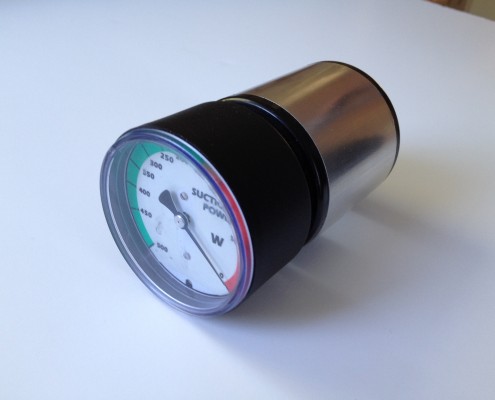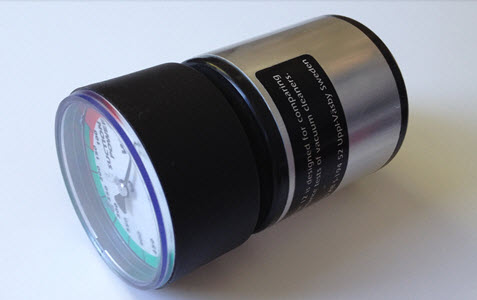Suction Power Gauge
Check the suction power, the most important function of the vacuum cleaner!
Each sold vacuum cleaner has a label with its rated power in Watt. The connection between the suction power and the label rated power is that the label power shows the approximated power consumption while the suction power is the power of the air flow. The measurable suction power is the most important function of the vacuum cleaner, not the label rated power.
Product specification
New EU-rules has been decided which includes that from 1 September 2014 shall all new sold vacuum cleaners have a label rated power at maximally 1600 Watt. This restriction will be followed by an additional EU-restriction of the power consumption concerning vacuum cleaners into 900 Watt from 1 September 2017. This means that the checking of the suction power will be even more important in order to fulfil an efficient cleaning.
Normally you need a lot of tests with technical equipment that exists only at the development departments at the largest vacuum cleaner companies in order to make measurements of suction power. With the Reservo Suction Power Gauge it is easy to measure the maximum suction power of all types of vacuum cleaners. It is suitable for comparing tests of different vacuum cleaners and how the aging of a vacuum cleaner influences the suction power. It is also suitable for investigating how the suction power will be influenced by different hoses and tubes and by different dust bags and filters regarding the capacity of dust.
The suction power of a vacuum cleaner should be at least 120 Watt in order to get an acceptable dust pick up from floors and carpets with an ordinary nozzle. For conventional vacuum cleaners the most common reason for a bad suction power is the dust clogging of the dust bag and the filters. For the bagless vacuum cleaners the filters is the clogging part. A suction power at 300 watt decreases easily down to below 100 Watt when the dust bag or the filters get clogged by dust.
The suction power gauge is suitable for all household vacuum cleaners and most central vacuum cleaners because of that measurements up to 500 Watt is possible to execute.
Old vacuum cleaners have often a lower level of suction power because they were designed with a lower motor power and vacuum cleaners which are used for several years often have leakage or air flow resistance somewhere within the product. New vacuum cleaners have been designed different regarding motor power, fan system, leakage and air flow resistance and therefore a new vacuum cleaner today often have a suction power between 200-450 Watt. The suction power in Watt is a value showing how well the vacuum cleaner can keep its air flow when the nozzle is pressed towards a carpet or when dust bag or filters are clogged.
When measuring the suction power of a vacuum cleaner, the air flow is consciously throttled so it corresponds to a similar situation as for vacuuming dust from a carpet. The maximum suction power of a vacuum cleaner occur when the air flow is consciously throttled to a value which together with measured value of the vacuum pressure at the same time, give the maximal result when they are multiplied. This measuring shall be executed including hose and tube in order to show the available suction power at the nozzle connection.
Areas of application
For cleaning companies:
- Use science for optimizing the cleaning equipment .
- Compare the suction power of the vacuum cleaners and evaluate the price when renewing the machinery
- Check the suction power of old vacuum cleaners for keeping an efficient cleaning.
- Check the suction power when changing the accessories as hoses, tubes, bags and filters.
- Check the suction power when changing dust bags and filters.
For buyers and sellers of vacuum cleaners:
- Compare the suction power of different models with different prices.
- Use the gauge when visiting suppliers, and exhibition fairs.
For manufacturing companies:
- Use the gauge when developing vacuum cleaners and the accessories in order to keep a high level of suction power of the complete product.
- Use it before delivery and at spot tests.
For service and repair shops.
- Check the suction power before and after repairing and compare with a new product.




